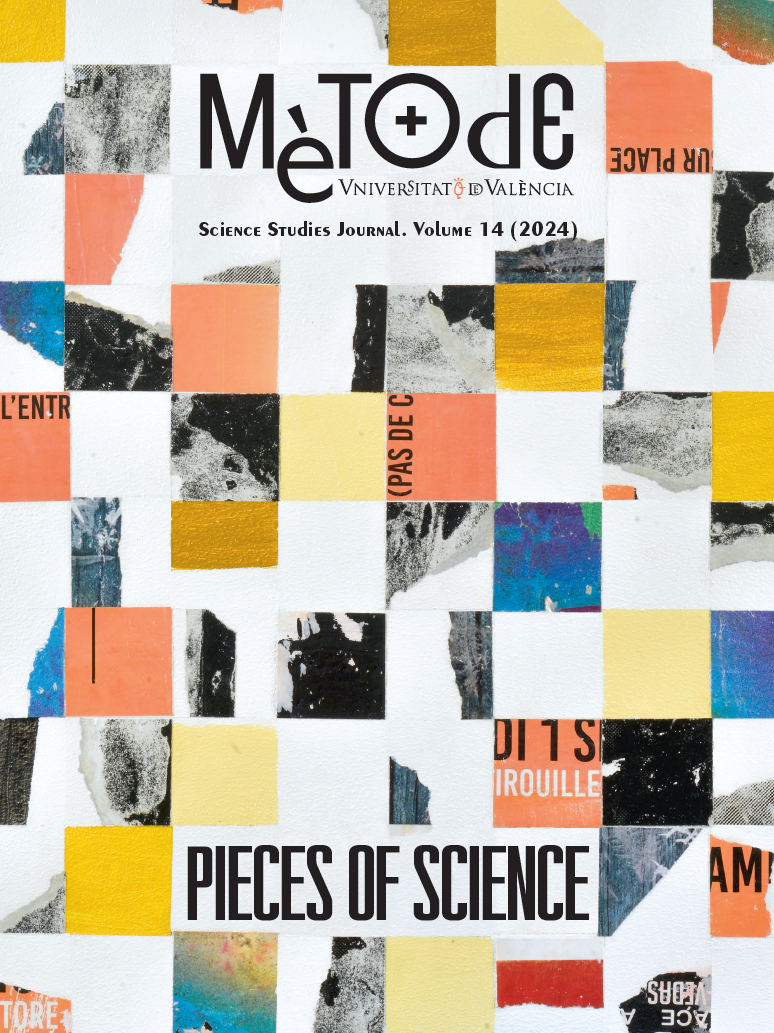Photography and biodiversity awareness: The use of images in conservation
DOI:
https://doi.org/10.7203/metode.14.24705Keywords:
photography, conservation, history, research, science Abstract
Abstract
Since its inception, photography has played an important role as a documentary tool. It has been used to communicate and disseminate biodiversity research and conservation projects in different parts of the world. Today, the extraordinary technological development and popularity of photography has allowed it to be used to collect data for different types of scientific projects and to facilitate a much more fluid exchange of information between the scientific community and the public, for example in citizen science programmes. However, a paradigm shift is now being proposed for photography to move beyond its purely artistic sense to reveal its informative and knowledge-generating potential in the field of conservation.
 Downloads
Downloads
 References
References
Burton, A. C., Neilson, E., Moreira, D., Ladle, A., Steenweg, R., Fisher, J. T., Bayne, E., & Boutin, S. (2015). Wildlife camera trapping: A review and recommendations for linking surveys to ecological processes. Journal of Applied Ecology, 52(3), 675–685. https://doi.org/10.1111/1365-2664.12432
Collin A., Ramambason, C., Pastol, Y., Casella, E., Rovere, A., Thiault, L., Espiau, B., Siu, G., Lerouvreur F., Nakamura, N., Hench, J. L., Schmitt, R. J., Holbrook, S. J., Troyer, M., & Davies, N. (2018). Very high resolution mapping of coral reef state using airborne bathymetric LiDAR surface-intensity and drone imagery. International Journal of Remote Sensing, 39(17), 5676–5688. https://doi.org/10.1080/01431161.2018.1500072
Espejo, B. (2015, 11 December). Joan Fontcuberta: «Antes la fotografía era escritura. Hoy es lenguaje». El Español. https://www.elespanol.com/el-cultural/arte/20151211/joan-fontcuberta-fotografia-escritura-hoy-lenguaje/85991548_0.html
Fossey, D. (1985). Gorilas en la niebla. Salvat editores.
Groom, M. J., Meffe, G. K., & Carroll, C. R. (2006). Principles of conservation biology. Sinauer associates.
Hodgson, J. C., Mott, R., Baylis, S. M., Pham, T. T., Wotherspoon, S., Kilpatrick, A. D., Segaran, R. R., Reid, I., Terauds, A., & Koh, L. P. (2018). Drones count wildlife more accurately and precisely than humans. Methods in Ecology and Evolution, 9(5), 1160–1167. https://doi.org/10.1111/2041-210X.12974
Ivosevic, B., Han, Y. G., Cho, Y., & Kwon, O. (2015). The use of conservation drones in ecology and wildlife research. Journal of Ecology and Environment, 38(1), 113–118. https://doi.org/10.5141/ecoenv.2015.012
Lambertucci, S. A., Margalida, A., Speziale, K. L., Amar, A., Ballejo, F., Bildstein, K. L., Blanco, G., Botha, A. J., Bowden, C. G. R., Cortés-Avizanda, A., Duriez, O., Green, R. E., Hiraldo, F., Ogada, D., Plaza, P., Sánchez-Zapata, J. A., Santangeli, A., Selva, N., Spiegel, O., & Donázar, J. A. (2021). Presumed killers? Vultures, stakeholders, misperceptions, and fake news. Conservation Science and Practice, 3, e415. https://doi.org/10.1111/csp2.415
Mangewa, L. J., Ndakidemi, P. A., & Munishi, L. K. (2019). Integrating UAV technology in an ecological monitoring system for community wildlife management areas in Tanzania. Sustainability, 11(21), 6116. https://doi.org/10.3390/su11216116
Norouzzadeh, M. S., Nguyen, A., Kosmala, M., Swanson, A., Palmer, M. S., Packer, C., & Clune, J. (2018). Automatically identifying, counting, and describing wild animals in camera-trap images with deep learning. PNAS, 115(25), e5716–e5725. https://doi.org/10.1073/pnas.1719367115
Paneque-Gálvez, J., McCall, M. K., Napoletano, B. M., Wich, S. A., & Koh, L. P. (2014). Small drones for community-based forest monitoring: An assessment of their feasibility and potential in Tropical areas. Forests, 5(6), 1481–1507. https://doi.org/10.3390/f5061481
Rovero, F., & Marshall, A. R. (2009). Camera trapping photographic rate as an index of density in forest ungulates. Journal of Applied Ecology, 46(5), 1011–1017. https://doi.org/10.1111/j.1365-2664.2009.01705.x
Rowcliffe, J. M., Kays, R., Kranstauber B., Carbone, C., & Jansen, P. A. (2014). Quantifying levels of animal activity using camera trap data. Methods in Ecology and Evolution, 5(11), 1170–1179.
Sontag, S. (1977/2005). Sobre la fotografía. Alfaguara.
Tabak, M. A., Norouzzadeh, M. S., Wolfson, D. W., Sweeney, S. J., VerCauteren, K.C., Snow, N. P., Halseth, J., Salvo, P., Lewis, J., White, M., Teton, B., Boughton, R., Wight, B., Newkirk, E., Odell, E., Brook, R., Moeller, A., Mandeville, E., Clune, J., Miller, R., & Schlichting, P. (2019). Machine learning to classify animal species in camera trap images: Applications in ecology. Methods in Ecology and Evolution, 10(4), 585–590. https://doi.org/10.1111/2041-210X.13120
Wang, S. W., & Macdonald, D. W. (2009). The use of camera traps for estimating tiger and leopard populations in the high altitude mountains of Bhutan. Biological Conservation, 142(3), 606–613. https://doi.org/10.1016/j.biocon.2008.11.023
Downloads
Published
How to Cite
-
Abstract1421
-
PDF256
Issue
Section
License
Copyright (c) 2023 CC BY-NC-ND 4.0

This work is licensed under a Creative Commons Attribution-NonCommercial-NoDerivatives 4.0 International License.
![]()
All the documents in the OJS platform are open access and property of their respective authors.
Authors publishing in the journal agree to the following terms:
- Authors keep the rights and guarantee Metode Science Studies Journal the right to be the first publication of the document, licensed under a Creative Commons Attribution-NonCommercial-NoDerivatives 4.0 International License that allows others to share the work with an acknowledgement of authorship and publication in the journal.
- Authors are allowed and encouraged to spread their work through electronic means using personal or institutional websites (institutional open archives, personal websites or professional and academic networks profiles) once the text has been published.





